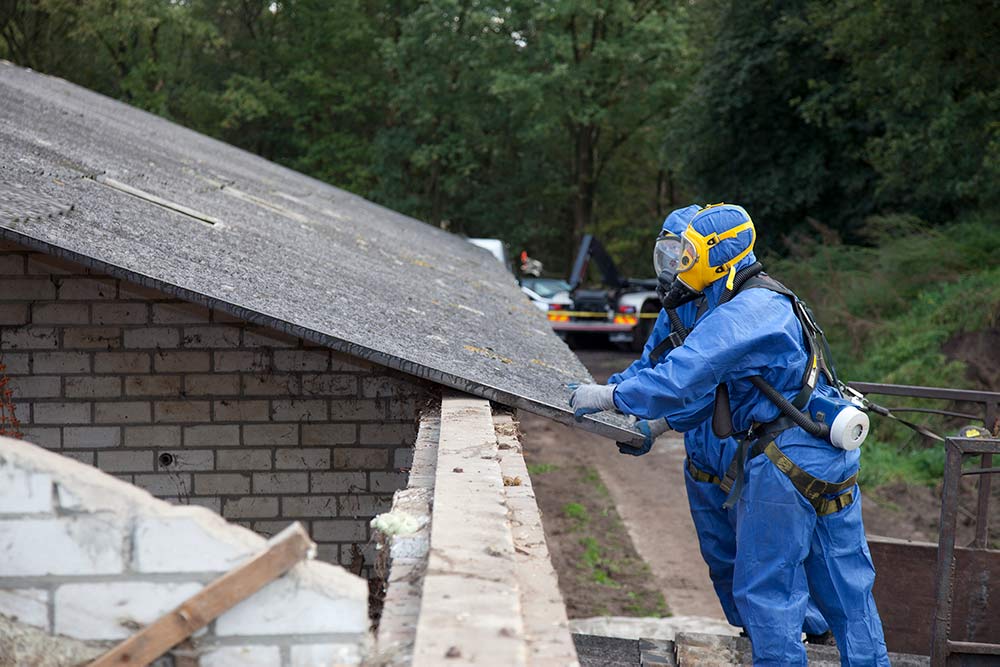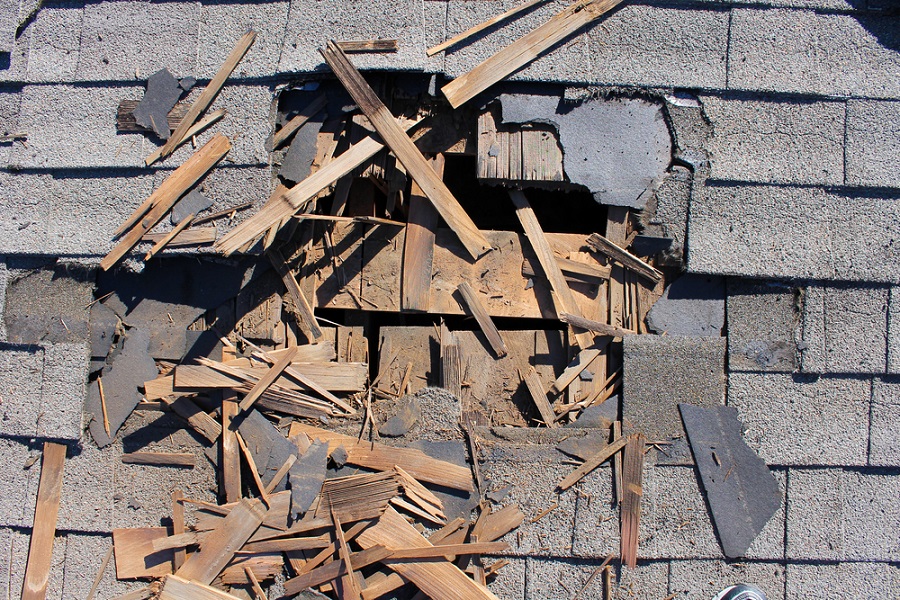What All Contractors Need to Know About Asbestos Remediation

This week is National Roofing Week, and today’s topic focuses on employee training. One of the biggest areas of training pertains to on-the-job safety. While slips, trips, and falls are the most common hazards that construction workers face on the job, they are not the only ones. When doing work on older homes and buildings, roofing contractors risk being exposed to asbestos-containing materials.
Asbestos-containing materials (ACM), such as roofing, siding, wallboard, and other construction materials, must be handled and removed with care. The Occupational Safety and Health Administration (OSHA), part of the U.S. Department of Labor, has regulations in place to help minimize and even prevent exposure to asbestos.
OSHA Standard 29 CFR 1926.1101 covers the construction, alteration, repair, maintenance, or renovation and demolition of structures containing asbestos. Keep reading for an overview of what all contractors should know about asbestos remediation.
What is asbestos?
Asbestos was a popular building material before the 1980s. It includes minerals such as chrysotile, amosite, crocidolite, tremolite asbestos, anthophyllite asbestos, actinolite asbestos; these may or may not have been chemically treated and/or altered in building materials.
According to OSHA, common presumed asbestos-containing materials (PACM) include roofing and siding shingles, thermal system insulation, certain ceiling and floor tiles, and other building materials. Contractors working on older homes, especially, need to take care to prevent harmful exposure to asbestos.
What are the dangers of asbestos exposure?

Breathing in or consuming asbestos fibers can cause asbestosis, lung cancer, mesothelioma, and gastrointestinal cancer, among other conditions, which could appear as many as 20 years or more after the exposure. While treatments are available for these conditions, they cannot be cured.
In some cases, workers can sue an employer if they suffer from a condition like mesothelioma due to on-the-job asbestos exposure. Following OSHA regulations can help prevent exposure to this deadly hazard.
What does OSHA consider a hazardous level of asbestos?
Some building materials contain more than 1% asbestos, which can pose a hazard if they are not handled with proper care. The Permissible Exposure Limit (PEL) for asbestos, according to OSHA, is “0.1 fiber per cubic centimeter of air as an eight-hour time-weighted average (TWA), with an excursion limit (EL) of 1.0 asbestos fibers per cubic centimeter over a 30-minute period.”
However, while these may be the legal limits, there is no such thing as a “safe” level of asbestos. Even asbestos exposure over a period of just a few days can lead to severe health problems. In order to identify and mitigate an asbestos threat, you must have someone on-site who has received proper training. This person is known as a designated “competent person.”
What is the role of the competent person?

As an employer, you are expected to empower this individual with the resources necessary to keep the site safe. OSHA requires specific comprehensive Environmental Protection Agency (EPA)-certified training for your designated competent person.
If asbestos is suspected on the job site, you must allow this individual to inspect it and gather objective data. This will either prove that there is no danger—a Negative Exposure Assessment (NEA)—and that exposure is below the PEL, or the inspection will determine that the threat is serious enough to require remediation. Employers must keep detailed records of any and all incidents involving asbestos exposure in the workplace.
What kind of recordkeeping is required for a job with an asbestos hazard?
Employers need to retain three types of records regarding asbestos hazards:
- Exposure monitoring:You must keep records of employee exposure monitoring for at least 30 years. These detailed records include data such as materials monitored, level of exposure, methods of analysis, and number of samples as well as the names, Social Security numbers, and exposure levels of employees involved.
- Medical surveillance:Worker medical surveillance records must be retained for the duration of the worker’s employment plus an additional 30 years.
- Training:Any training records must be kept for one year beyond the worker’s last day of employment.
You have an obligation to make these records available to the employees themselves as well as to their representatives and to OSHA when requested.
What other responsibilities do contractors have regarding asbestos remediation?
Employers must perform several functions related to hazardous materials. If asbestos is discovered on your job site, you must mark off the area with warning signs. You also must supply a respirator to all persons entering the area and let other contractors on-site know about the risks.
As the contractor, you assume responsibility for controlling the exposure and abating the hazards. If you are working with a general contractor, he or she is responsible for overseeing the site and can insist on compliance.
Reducing and eliminating the threat of asbestos exposure may sound difficult, but help is available. The National Roofing Contractors Association (NRCA) developed a checklist for workers who may be dealing with asbestos-containing building materials. This, as well as other resources and information on consultation services, can be found on the OSHA website.
Minimize on-the-job risk with the EagleView App!
The EagleView App puts detailed property measurements, 3D visualizations, automatic quotes, and more right at your fingertips. You have all the info about a job site you need, without having to climb the roof during the bidding stage. Download today for Android and iOS devices.


